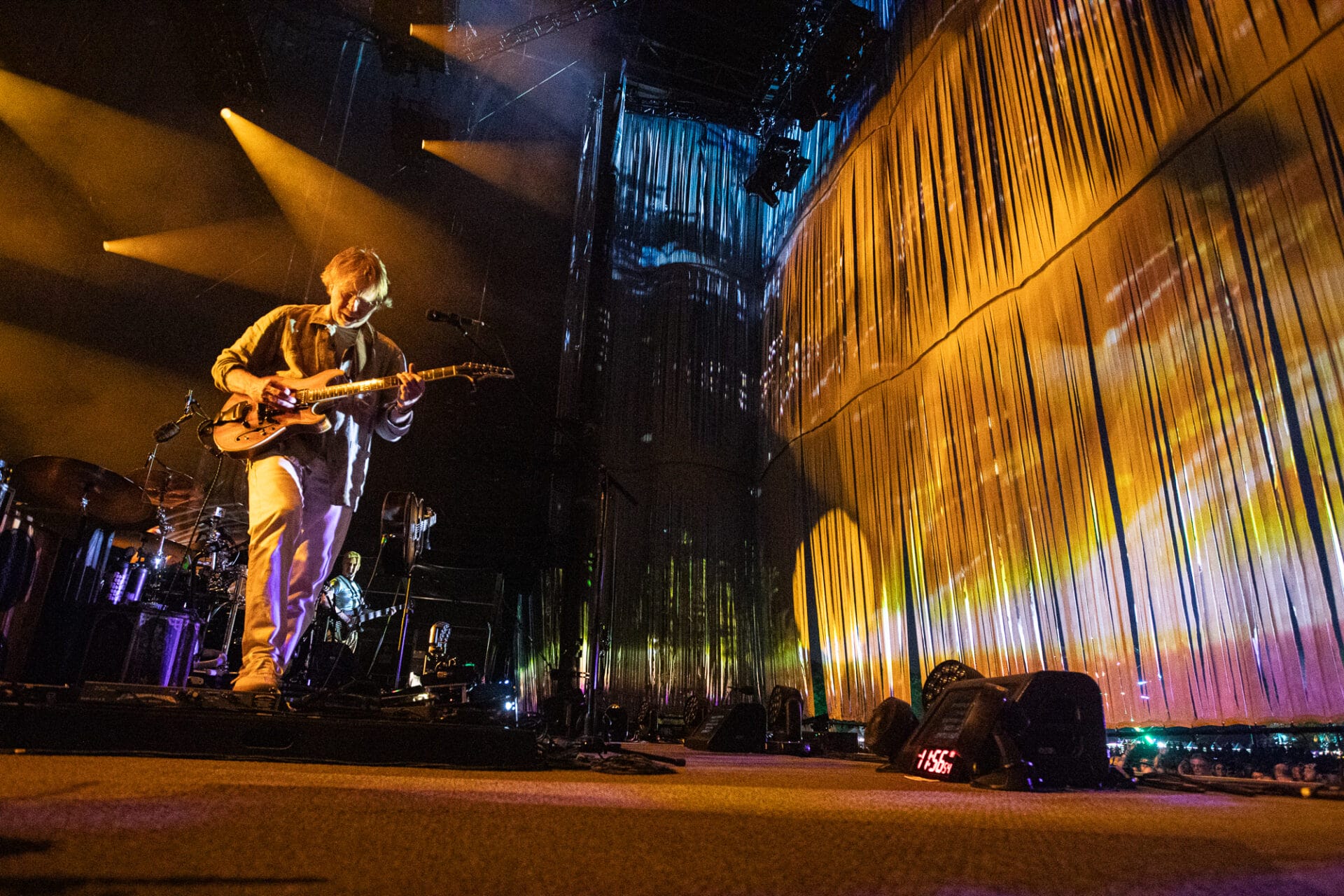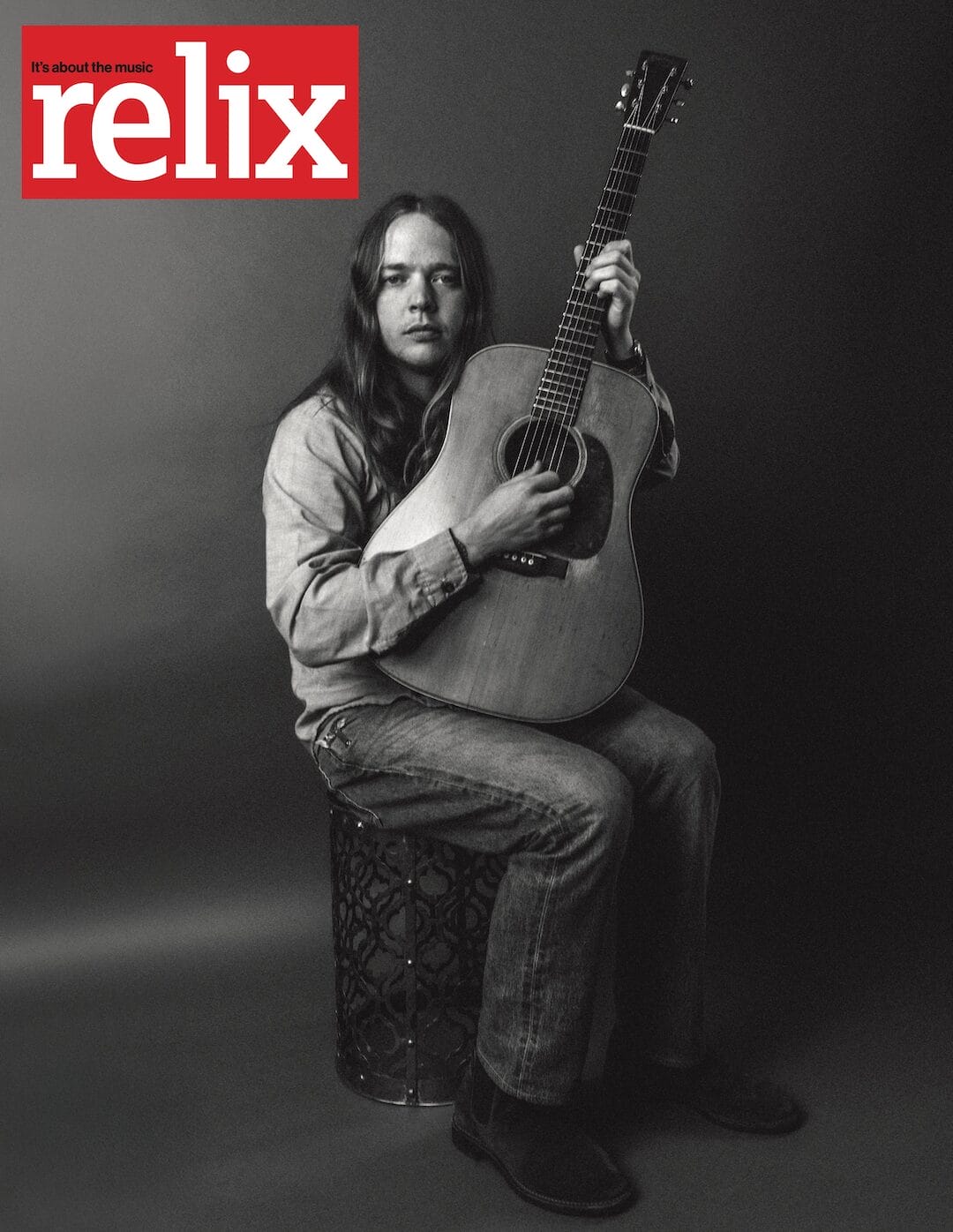Secret Agent: Moment Factory’s Manuel Galarneau on Phish’s Special Set at Mondegreen

Photo Credit: Rene Huemer
***
“I’m an artist. I strive for creative freedom and I feel like with Phish you get it,” Manuel Galarneau says the day after Phish’s secret set at Mondegreen. Galarneau is the multimedia director at Moment Factory, the Montreal-based entertainment studio known for creating immersive environments that has previously worked with Phish at Magnaball, Madison Square Garden and Sphere.
“Officially on this one I’m the show director, creative director,” he explains, “but on different projects I’m going to have different roles. I wear different hats. As multimedia director, I’m generally overseeing the visuals, which I did for the Sphere with Phish, but on this specific one I was in charge of the vision for the secret set.”
What was your starting point when you began to formulate ideas for the set?
It all started with the meaning of “mondegreen” itself. I heard Trey mention that mondegreen is a term for the way people misinterpret lyrics from songs. So I thought, “Okay, well let’s do visuals that are morphing, blending and evolving in a way that is questioning what you’re seeing in the same way that lyrics are interpreted in different ways.” So those morphing and evolving visuals really came out of that.
How did it evolve from there?
Before any animation began, I pitched them this idea of having a visual journey that would start in the woods. You are in the forest and it’s going to be all nature-based and the vines are going to grow and take over the stage. It’s a starting point and then we’re going to bring you into this nature journey.
That’s the starting point and then band would create physical shadows that shapeshift in between animals, characters and the shadows of the band—just trying to blur the line of what was real and what wasn’t.
Then this would bring you into a clearing. This was the dreamy forest tableau that would be more open and a little bit more peaceful. Then progressively we were bringing you into the shapeshifting trees—this crazy surreal imagery blending with trees. So we had the umbrellas merging with trees and houses in trees. I had seen a Phish poster that I liked that had all these crazy tree houses [Alpine Valley 2012, poster by Landland], so we thought, “Okay, let’s try to have this a big moment with houses in the woods,” which was very fitting at Mondegreen.
Then, just for pacing purposes, midway through the set, we tried to have a very calm and serene scene. We were building it up with those crazy twisting trees and then we just brought it all to a halt and there were the slow water streams. We call the tableau Magical Streams—the regular waterfall starts to turn around, shift again, and then the water streams are spinning everywhere.
This leads us into basically the next one—Organic Architecture, which was a blend of not grid-like, but really strong perspective lines of architecture blending with natural elements. Then eventually we have fireflies where we were able to come up with trees that would shoot sparks, although it looked like fireworks. Then we blended galaxies with them as if you’re going into space while you’re seeing these trees shoot out these sparks.
This was all meant to be a big crescendo leading up to the end, the closing outro scene with big explosions. Within it we made sure to have hints of the different visuals you’ve seen along the journey—kind of as a recap of the whole thing. It’s as if you’re at the end of the movie where there are all of the things that you’ve seen or your life flashing before you that we tried to squeeze into the last seconds of the show.
Then we brought the VHS tape which had this kind of analog old-school feel to it. We had the play sign and it switched to stop when the music was over.
I saw as it as this big journey where you’re going to the woods with a heavy burden and you’re hoping to find peace. Eventually you find a path to another plane of understanding where you’ve reinvented yourself.
How challenging was all this to achieve on the technical side?
It was done with state-of-the-art custom tools. It was like a big art laboratory, much more than a lot of projects we often do at Moment Factory. A lot of risks and unknowns went into it.
The idea was to render the art in a way that feels to me how free Phish’s music sounds. With another band, I might use stop motion animation or very lush 3D renders but this is what made sense with Phish.
We spent months creating different animations that could be blended. We have short clips that have evolutions within them, but can also be combined in different ways. We worked with software where we weren’t just fading clips. We were able to morph two different elements while still revealing the shapes.
What was the process like of selecting the material that appeared in front of the band where you projected the visuals?
I pitched different ideas to the band. When we knew we were projecting visuals, we needed a big projection screen. But with the wind outdoors at that scale, it’s not easy to find something that you can easily project on without it being torn apart.
Eventually we came up with the idea of having different strips that would let wind go through and also lighting could seep through. We did tests with different thicknesses and different colors. We eventually realized that for mapping purposes, gray is the ideal color.
We did various other tests as well. With the first test we had only strips going all the way from the top to the bottom, and it was so loose that the wind just ripped it apart. Eventually we sewed together rows at three points in the curtain so the physical integrity of the curtain would be stronger. That way it would withstand wind and stay in place a little bit more. So basically from trial and error we got to this pretty unique curtain. It’s this same material that they use to strap things on trucks. It’s gray and each strip is two inches wide.
The company that helped us to produce this slitdrape webbing basically dedicated their whole studio to a lot of people sewing the thing for weeks. It was such a big and crazy endeavor. We visited them and the curtain was all over their warehouse. They were like, “Please get this away from us so we can have some room.” [Laughs.]
Once that was complete, to what extent were you able to test any of it out in advance?
We did a small scale test at Moment Factory to give us answers on different parameters. We had was a sample of not the full curtain, but sections of it from top to bottom. It was maybe 10 or 12 feet wide but the full height. So we would go into those companies that rent lifts and in their parking lot we would raise a lift with a truss and see what the wind would do to them. Then with our technical content director we tested out different ways to map the visuals. We needed to see angles because the stage is peculiar. It’s not just a flat surface; it’s kind of encased a little bit. So we wanted to see how the angles would work.
Then we had pretty much a week to set it up on site—to rehearse getting it down and up, but also see the actual lighting conditions. Those are the finishing details. All the visuals were done by this point and we were just making sure of the contrast, brightness, execution—how all of that works. We had the luxury to have a couple of nights to ourselves because Chris [Kuroda] worked very fast with us, so lighting didn’t need as much time. We were privileged to have a couple of overnighters leading up to the show to manage the final details.
Did anything surprise you in terms of the execution?
This was meant to be a very ambient set, very low key and subtle. So most of the visuals we did were very calm. To be honest, there was a moment at the very beginning of the set in the forest scene when I wondered if it was going to be too calm but then the band went off.
I did suggest intensity levels for the different tableaus of what I wanted, but they rocked so hard, it was not what we had expected. However, we had put in some visuals with stuff we could go to if we ran out of material. So we were jumping around and going to different clips we had not even rehearsed—going wild, going fast and changing colors much more intensely than we were planning. But this is what it’s like working with Phish and I wouldn’t have it any other way.
We had made it so that we could follow them. If musically they were going somewhere, we could go there. I said to them, “I built a path for you guys, but if I was planning to go right and you guys are turning left, we’re going to follow you. So that’s what we did. We were prepared for something much more subdued initially, so that was a big surprise that worked surprisingly well.
I was curious about your ability to respond to the music on the fly, since everything seemed to be in sync, even though they were improvising.
When they do these special visuals gags, they like to play it as if it’s a score. On their side, although it’s not a transparent surface, they can see what’s going on. They had also seen the whole visual timeline beforehand. They had asked me to give them intensity levels from one to 10 for every scene. I gave them an 11 on the last one and they really did it.
It’s just a joy to work with them in that sense. They can do it both ways. They can jam the hell out and then you just follow them.
But I really feel like this is the great thing about working with Phish. As a visual artist, at the end of the day, I feel like I am jamming with them. It’s a true collaboration.




















